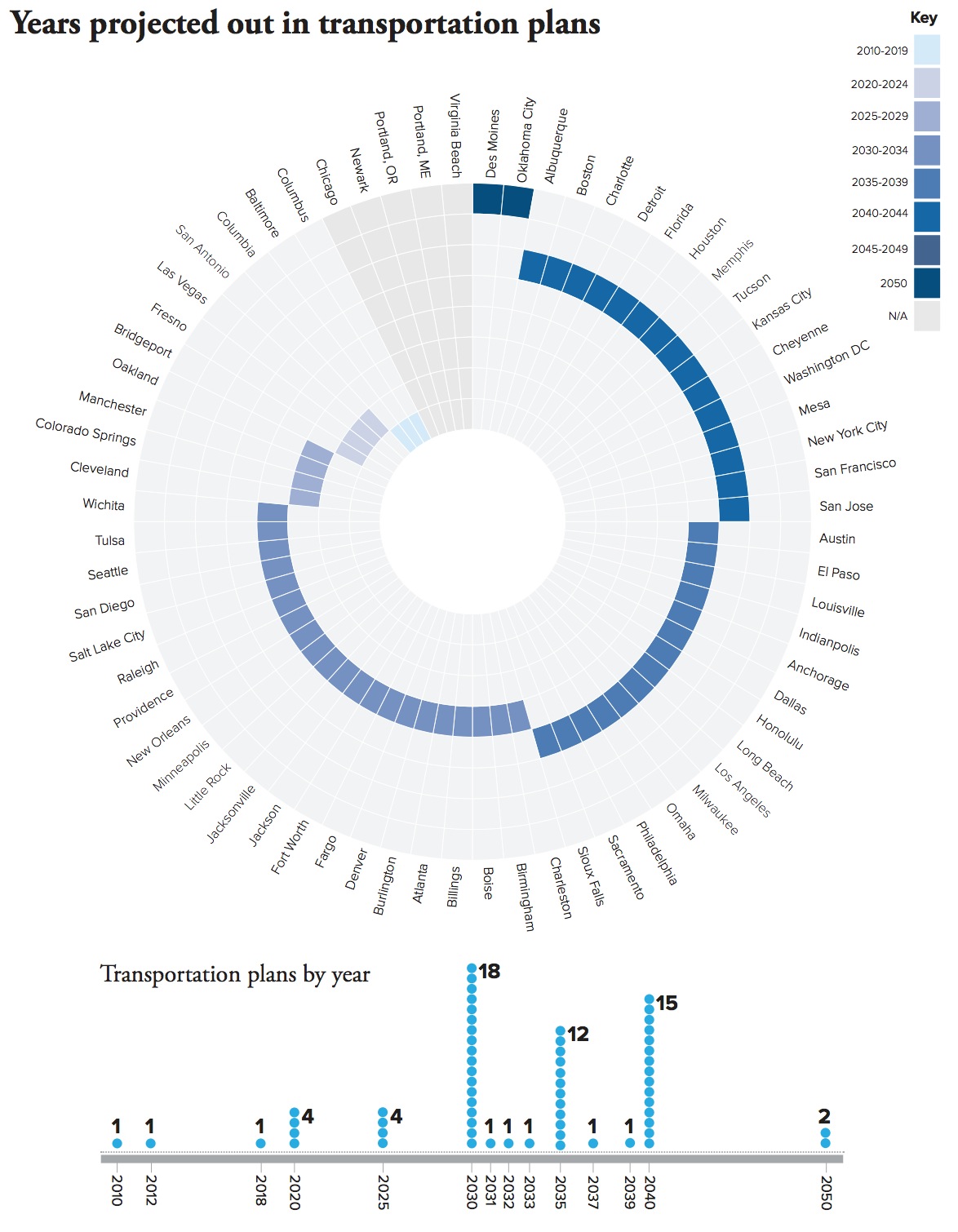NATIONAL LEAGUE OF CITIES
Executive Summary
The seamless and efficient movement of people in cities has been a priority for government since its inception.
Mobility options are fundamental to providing a robust platform for economic activity and human interaction within the urban environment. Today, rapid technological advances coupled with shifts in demographics and public preferences are dramatically altering the nature of transportation in America’s cities. Technology’s ever-growing impact has profound and far-reaching implications for the future of urban mobility
The topic of mobility and technology is a key consideration for cities as they plan for the future of their communities. The National League of Cities’ (NLC) City of the Future initiative explores existing trends and predicts future developments so that cities can anticipate changes in the urban landscape and prepare accordingly. This multi-year research project focuses on five different factors that affect cities: technology, economics, climate, culture and demographics. By exploring these factors through a city-centric lens, the initiative highlights specific issues that will affect how people experience and move throughout cities for years to come.
The first report in this series focuses on the nexus between mobility and technology. Creating a transportation network – a platform for commerce and human interaction – is one of the oldest and most important functions of government. Technology is leading cities to more dynamic transportation systems where people shift seamlessly between multiple modes depending on their needs. The ultimate goal of cities must be to combine different transit modes into a coherent whole, so that moving from place to place is easy, equitable and enjoyable.
This report draws conclusions from a variety of sources, including existing literature, expert interviews and transportation plans. We have discovered widening gaps between innovation in the private sector, the expressed preferences of citizens and the visions of city planners regarding transportation investment.
Many transportation plans which project outcomes decades into the future focus almost exclusively on the problem of automobile congestion and prescribe increased infrastructure in the form of new roads as the primary cure. However, experts and trends point to a future that will be increasingly multi-modal.
We conducted a content analysis of city and regional transportation planning documents from the 50 most populous US cities, as well as the largest cities in every state – a total of 68 communities. Our analysis yielded the following results:
- 6% of plans consider the potential effect of driverless technology
- 3% of plans take into account private transportation network companies (TNCS) such as Uber or Lyft, despite the fact that they operate in 60 of the 68 markets
- 20% of plans include road diets or other plans to reduce road capacity or long-term maintenance costs
- 50% of plans contain explicit recommendations for new highway construction
- 12% of plans are clear that no new highways are under consideration
Each of these results points to its own significant trend, but their cumulative impact coupled with further advances in technology will continue to drive unprecedented and unpredictable changes in mobility. This report lays out two core scenarios focusing on the possible impacts of technology on mobility: one which centers around short-term predictions that may manifest themselves by the year 2020, and another which centers around long-term predictions that could be seen by the year 2030 or later. Within each of these scenarios we consider four key themes:
- Demographic and workforce trends
- Infrastructure finance
- The growth of public and private mobility systems
- The availability of new modes of transportation
The mobility environment is rapidly shifting, and technology serves as a critical agent of change. The lessons of the past teach us that, while we can anticipate change and make reasoned predictions as to where advances in technology may lead us, the future of mobility in cities is far from certain. We can guarantee, however, that this will be an interesting ride.
Download full version (PDF): City of the Future
About the National League of Cities
www.nlc.org
The National League of Cities (NLC) is dedicated to helping city leaders build better communities. Working in partnership with the 49 state municipal leagues, NLC serves as a resource to and an advocate for the more than 19,000 cities, villages and towns it represents.
Tags: National League of Cities, NLC







 RSS Feed
RSS Feed
I wonder if there is a correlation between where city planners are planning for transportation and the number of sales within their community.